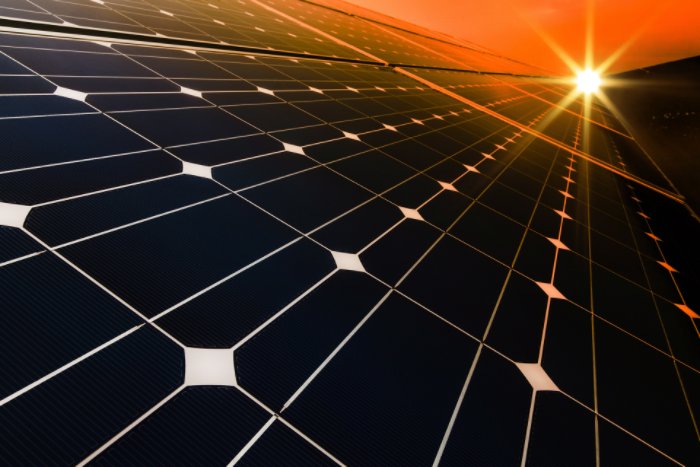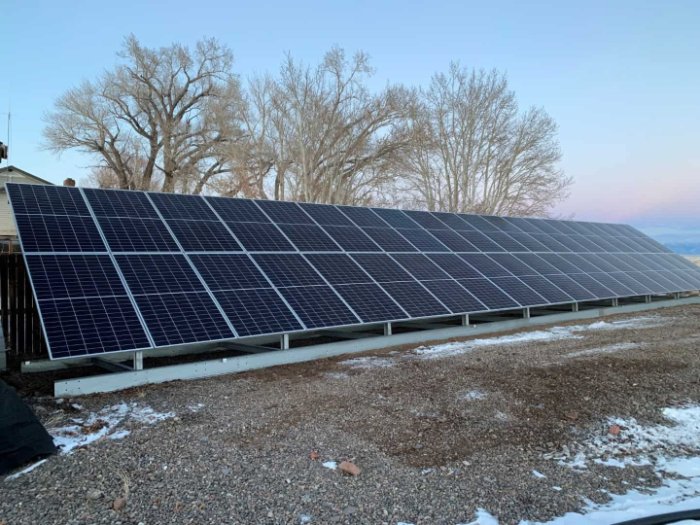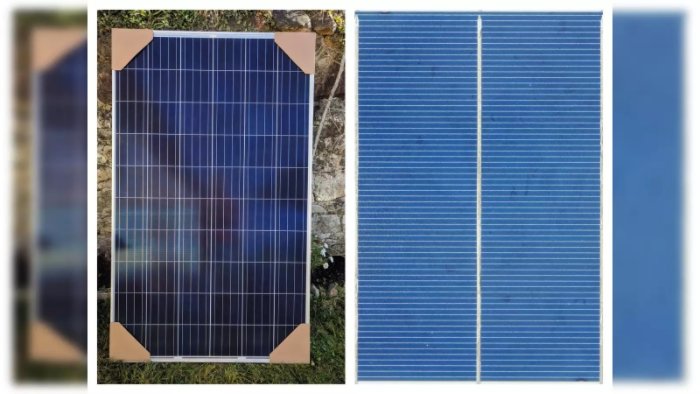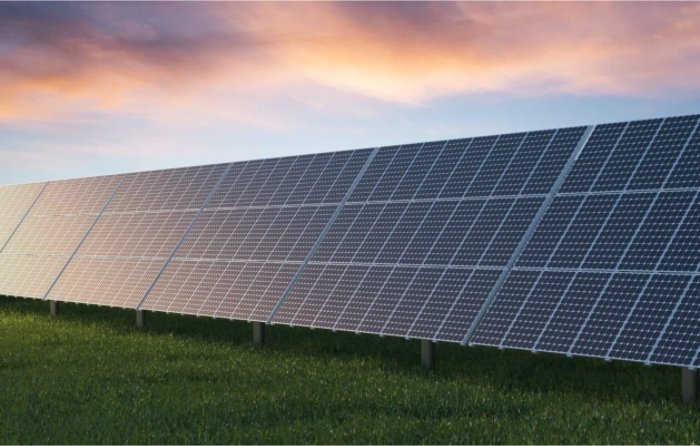Advanced Anti-Reflective Coatings
The most important recent breakthrough in the solar industry was the invention of advanced anti-reflective coatings on monocrystalline photovoltaic. These coatings are created to diminish the amount of light that gets reflected away from the solar cell, making another part of the light spectrum get absorbed. This is critical because it directly relates to the increase in energy conversion efficiency of the panels – traditional solar panels may operate on the rate of 15-20%, while with the new AR coatings’ help, the majority of solar panels may function well beyond an efficiency of 20%.
One of the recent inventions in the field is the use of nanotechnology in making multi-layered AR coatings that can enhance the properties of the light that can be absorbed. These coatings include a number of ultra-thin layers, each created from a different material and serving to a specific refractive index. The role of the coating is to reduce the reflection of sunlight across the solar array as it may vary in not only one but various frequencies. Thus, more light can be absorbed, making for an increase and improvement in overall efficiency.
The aspect of coatings’ increased durability and longevity is another critical element of the novel, advanced AR coatings. Rain, dust, humidity, and other context stressors are able to degrade other types of coating. The most recent innovations provide coatings that are significantly more effective at reduced reflection, and additionally resistant towards environment. One of the examples of this material is such a material, as silicon dioxide and titanium dioxide, which can greatly withstand UV degradation and environment chemicals. The 25 + year life panel is possible by this material’s durability.
The close integration of new AR coatings and smart technology presents another of the advancements in solar module optimization. A smart coating can now adapt not only to the angle of the light from the sun but also to changes in the sunlight’s intensity. Thus, the majority of light can be absorbed not through only one point of the day, but the lifetime of the panel. An example is an attractively used material that changes its refractive index in correlation to temperature, translating to their better effectiveness as the intensity of the sun’s light rotates relative to the angle of the sun.
The advancements in cost-effective production of new AR coatings are also crucial for their application on a wider scale. Manufacturing techniques are now advanced enough so that these sophisticated materials can be produced against a cost that does not make them considerably more expensive compared to creating former kinds of layer. Their application can now be done in a single step process that is integral with a PV panel’s production process, making for the decrease in energy use during their production.

Innovations in Backsheet Technology
Backsheet is one of the critical components of monocrystalline solar panels. It is a protective outer layer that prevents any environmental or mechanical impact on electrical components. The latest innovations in this component resulted not only in a much higher degree of durability and longer life for solar panels but also in some added value to the performance of this renewable energy source in general. Namely, the latest achievement in this regard is fluoropolymer-based backsheets, which can boast the highest degree of UV and moisture resistance, the two key factors that prolong the life of solar panels. The materials are not expected to deteriorate or lose their properties for at least 30 years, making this period approximately proportional to the life cycle of monocrystalline solar panels.
Increased Thermal Stability
Another improvement achieved due to the introduction of new backsheet materials is increased thermal stability. As these backsheets are highly effective at removing accumulated heat, the temperature of the solar cells is unlikely to reach a value when it begins to significantly decrease the efficiency of the panels. It is a well-known fact that the typical backsheets can help reduce the temperature of cells by about 5 degrees or even more, a characteristic that can increase the efficiency of solar cells by up to 0.5% under direct sun illumination, the most powerful source. Recent research demonstrated that the introduction of a material with the highest possible thermal conductivity in the composition of backsheets can significantly enhance this effect, thereby making bifacial panels an effective technology even in greatly varying temperature conditions .
More Eco-Friendly Materials
The increased attention to the implementation of renewable energy sources resulted in a trend that implies implementing more eco-friendly materials in solar panels, including backsheets . The newly designed backsheets are prone to utilizing non-fluorinated polymers, whose impact on the environment is significantly decreased. Another important achievement in this sector was the introduction of backsheets made from recycled materials. The development enhances both the sustainability of solar panel production and their attractiveness to industries and households that are looking for ways to reduce their environmental footprints.
Temperature Coefficient Improvements
The temperature coefficient is a significant factor in the development of solar panel technology: it represents the rate at which the efficiency of a panel will decrease with a rise in temperature above 25°C . Conventionally, panels have shown significant drops in performance as the temperature increased, but recent innovations have drastically improved these coefficients. The temperature coefficients for most panels manufactured in the past few years average less than -0.3% per degree Celsius, compared to the older panels, which were more than -0.5%. This means that if the panel’s temperature goes up by 10°C, its efficiency will drop by less than 3%, rather than the 5% that would have been lost by older panels.
Advanced Materials
In matters of solar panels, there have been significant advancements in the materials used in their making, which have helped in reducing their temperature coefficient. In general, perovskite solar cells are much better performers when it comes to insulation. Perovskite cells generally have a lower temperature coefficient than silicon-written solar cells. As a result, engineers have had the opportunity to develop hybrid perovskite-silicon cells, which are much more efficient but also have a more tolerable temperature coefficient .
Enhanced Design
Another method that has produced the intended results involved changing the design of the solar cells. By optimizing the thickness and formation of the cells’ layers, a significant amount of the heating of the cells is prevented.
For instance, by using thinner layers of the conducting material, the amount of heat that is absorbed by the cells is reduced. The thinner layer also ensures that the heat absorbed diffuses faster, leading to a lower panel temperature. This directly impacts the temperature coefficient as, regardless of the resultant temperature, the cells perform closer to the peak they are supposed to be operating on.
Integration with Cooling Solutions
To ensure that temperature does not affect panel performance, manufacturers have experimented with cooling solutions.
Basically, to introduce an active cooling solution, various manufacturers of cells have come up with systems that pump a cooling liquid behind the panels, ensuring that they do not overheat. There have been successful experiments in various solar installations in desert regions, as the efficiency losses due to rising temperatures have dropped significantly. The cells’ performance increasing slightly translates to a significant overall rise in the energy output of a panel.
Bifacial Solar Module Developments
Bifacial solar panels, which caught light from both the front and rear of the panel, have made rapid improvements to the efficiency and potential energy yield of solar installations. Depending on the specific installation configurations and surrounding environment where they are set up, their energy output can be as high as 30% higher than for traditional monofacial modules. One major innovation has been the incorporation of transparent backsheets, which significantly enhance the light-gathering performance from the rear of the module. In this way, light that either passed through the module and the surface on which it was set up or reflected off of its surface is absorbed. Fresnel reflection allows the albedo of surfaces such as white roofs or ground cover to contribute to the energy output of the module.
Optimized Reflection Techniques
To improve the energy yield of bifacial modules further, their developers have begun to experiment with ways to optimize the surface that the panels were set up on. These included laying down high albedo, loose-fitting ground materials, such as white gravel or specially designed, reflective mats . In fact, sectoral experience with large facilities using bifacial modules shows improvements in efficiency of as much as 10% just due to optimized ground albedo effects. Such optimized reflection technique is most applicable in regions with high sunlight and clear ground space.
Structural Improvements
The structure of the modules required redesigned for their rear face. Bifacial modules, unlike monofacial ones, require as little shading on the rear face as possible to be present, as their light absorption strategy depends on the light that is reflected off of the surface they are set up on. To achieve this, the rear supports, such as the frame or the mounting system, had to be redesigned. For example, the mounting system can be better elevated and angled to facilitate the optimal incidence angle of sunlight for both of the module’s faces. Through this adjustment, sunlight has the maximum possible incidence angle for both the morning and the afternoon in all seasons.
Advanced Cell Technology
Advancements at the level of cell technology have also driven the development of more efficient bifacial modules. Half-cut cells and drilled emitter rear cells have been particularly instrumental in enhancing the capture and conversion of light from both the faces of the module. Their high reflective properties and lower electronic loss, compared to regular solar cells, make them significantly more efficient. Their combination has led to a module technology that sets new limits for solar panel efficiency. This is particularly the case for utility-scale bifacial installations where even small percentage points of increases in efficiency can lead to impressive increases in the overall energy output of the installation.

Integration of Solar Tracking Systems
In the modern world, the efficiency of monocrystalline solar modules has been revolutionized by solar tracking systems that enable following the sun throughout the day . Ultimately, the goal of such an endeavor is to capture and utilize the maximum sunlight that reaches solar panels . At the same time, such a process could increase the percentage of solar energy converted to power by 25% compared to the stationary installations . The technology requires advanced sensors and motors to adjust the angle of panels based on the lighting in the sky. Specifically, one will be able to set the system to follow the sun either on a single axis by moving the panels east to west or introduce an additional axis that also compensates for the fact that the sun is descending in the sky as they ascend to wintertime, which is called the dual-axis system .
Increased Energy Yield
Given the aforementioned, the chief advantage of implementing solar tracking systems in solar power plants is the increased energy yield, which relates to the ability to generate profit from a solar installation on a more substantial scale. For instance, a 35% increase in energy production was observed by the U.S. solar farm in comparison to the pool not far from it . In other words, when it comes to areas with ample direct sunlight, the effect could be paramount in the long-term development of a solar project.
Smart System Integration
Modern state-of-the-art systems utilize the latest trends in smart technology, which specifically complement solar tracking, including IoT devices, in a uniform system that performs tracking depending on real-time weather conditions . The ability to predict and diagnose the potential problems triggered by the integration triggers such events from the maintenance team thus decreasing downtime. Likewise, the team will have the opportunity to flatten the panels during high winds and make any other adjustment from their office. In addition, the monitoring process allows gathering data to further tweak the panels and increase their efficiency.
Cost-Effectiveness and Installation
The systems have an increased investment over the fixed installations; however, the installation tends to differ given the changes in the design and manufacturing. For a small-scale installation, the overall competitiveness of the cost might be decreased, but the system could pay for itself over some time. The solutions one such as Array Technologies offer provide a customizable system where one will be able to change the scale of the project and have the same tracking technology in a small installation nearby. The variation will affect the initial investment, but the general approaches to the energy balance will remain the same.



